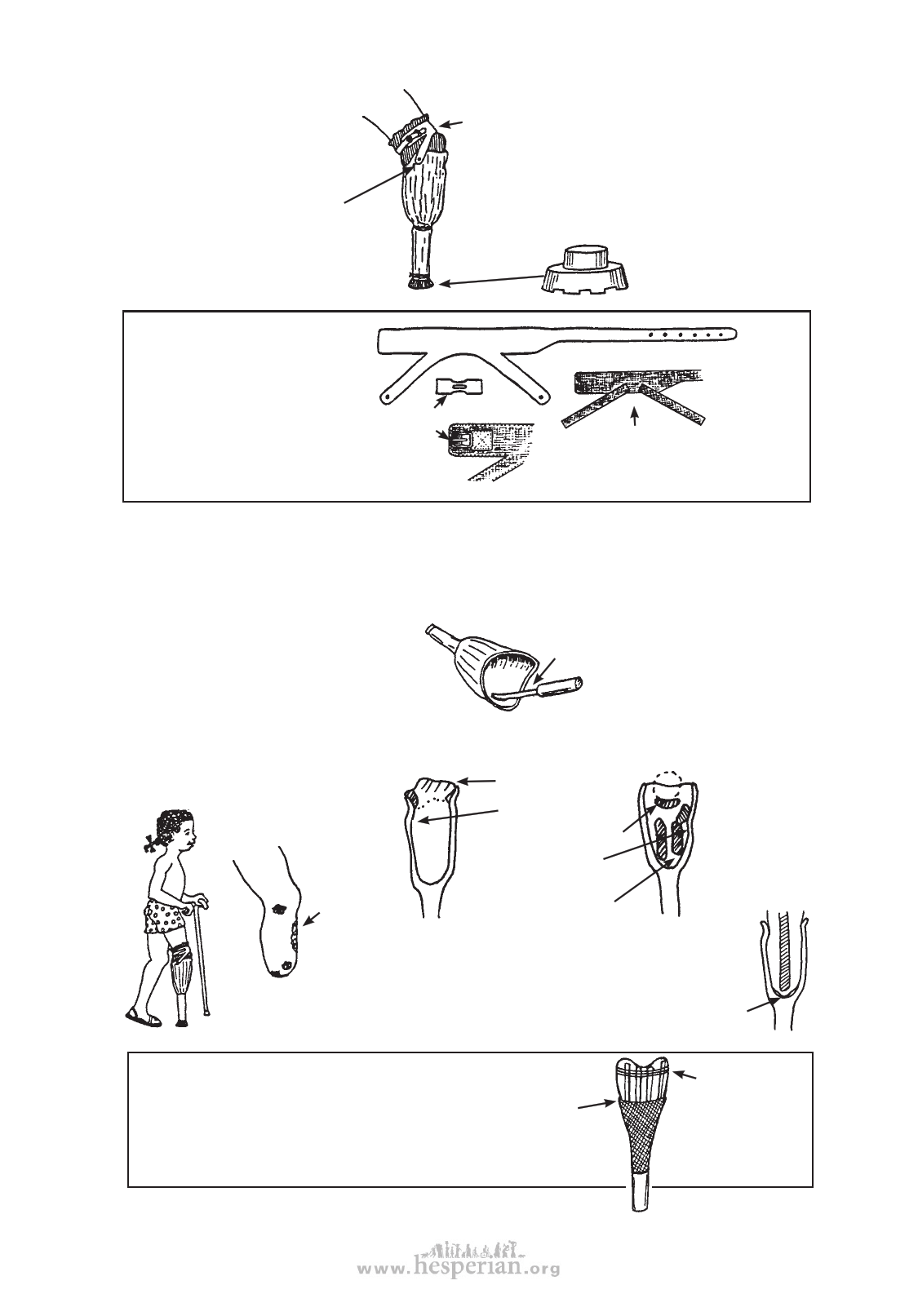
9. Make a ‘cuff’ to hold
the limb on. (If attached
correctly, it should also
help keep the knee from
over-straightening.)
Rivet cuff to socket
slightly behind mid-line
(Mark rivet points with
tabs pulled tight when
knee is a little bent.)
Fit cuff
just above
kneecap.
ARTIFICIAL LEGS
10. Make a rubber ‘heel’—a
piece of thick truck tire works
well. If you can, cut the tire
so that a ‘plug’ fits inside the
bamboo. Cut off bamboo as
much as the heel is thick. (Be
sure to allow
for height of
sandal or shoe
on other foot.)
631
Design for the knee cuff
Use strong leather and line it on
inside with soft smooth leather. It
should be a few cm. longer than
the distance around the knee.
Glue layers of leather and webbing
together with rubber cement and
sew at edges.
buckle
piece
Reinforce
tabs with dacron
webbing or other tough
non-stretch material.
(For other
ways of
holding the
limb to the
stump, see
p. 626.)
11. Have the child stand
and walk on the limb
for several minutes.
Then remove it and
look for sore spots
on the child’s skin,
or signs of too much
pressure. Check
especially over bony
spots. An area that
looks pale when the
limb is removed and
then turns red or dark,
is a sign of too
much pressure.
bony
spots
12. Scrape shallow pits into the socket from the
inside, at the points where it presses over
bones. You may also need to build up around the
area where pressure occurs.
rasp
(file)
(To help you find the right
points, it helps to have marked
‘bony spots’ before casting.
They will then be ‘printed’
inside the socket—see p. 628.)
If stump presses on bottom of socket,
you may need to build up
SIDE VIEW
CROSS
SECTION
the top edge,
behind the knee,
under the kneecap,
under the inner
side of the knee,
and on each side
of the shin bone.
To build up these
spots, dig a few
pits into the
socket surface
so new material
will grip better.
Fill with a paste
of fresh plaster
mixed with glue.
BACK VIEW
CROSS
SECTION
If socket presses on the end of the
bone, scrape out a hollow here.
During the first few weeks of using an
artificial limb, the stump becomes smaller,
and several changes in limb size may be needed.
To save time, use a shorter bamboo post so
that the plaster socket can be replaced
several times with new, smaller ones.
Put the
glue and
sawdust
only up
to here.
Hold the bamboo
strips to the
cast with wire.
Cut the wire
to change the
plaster socket.
disabled village children